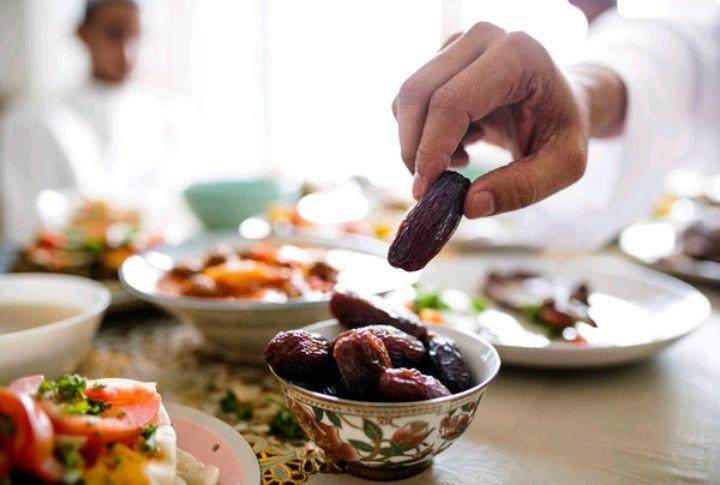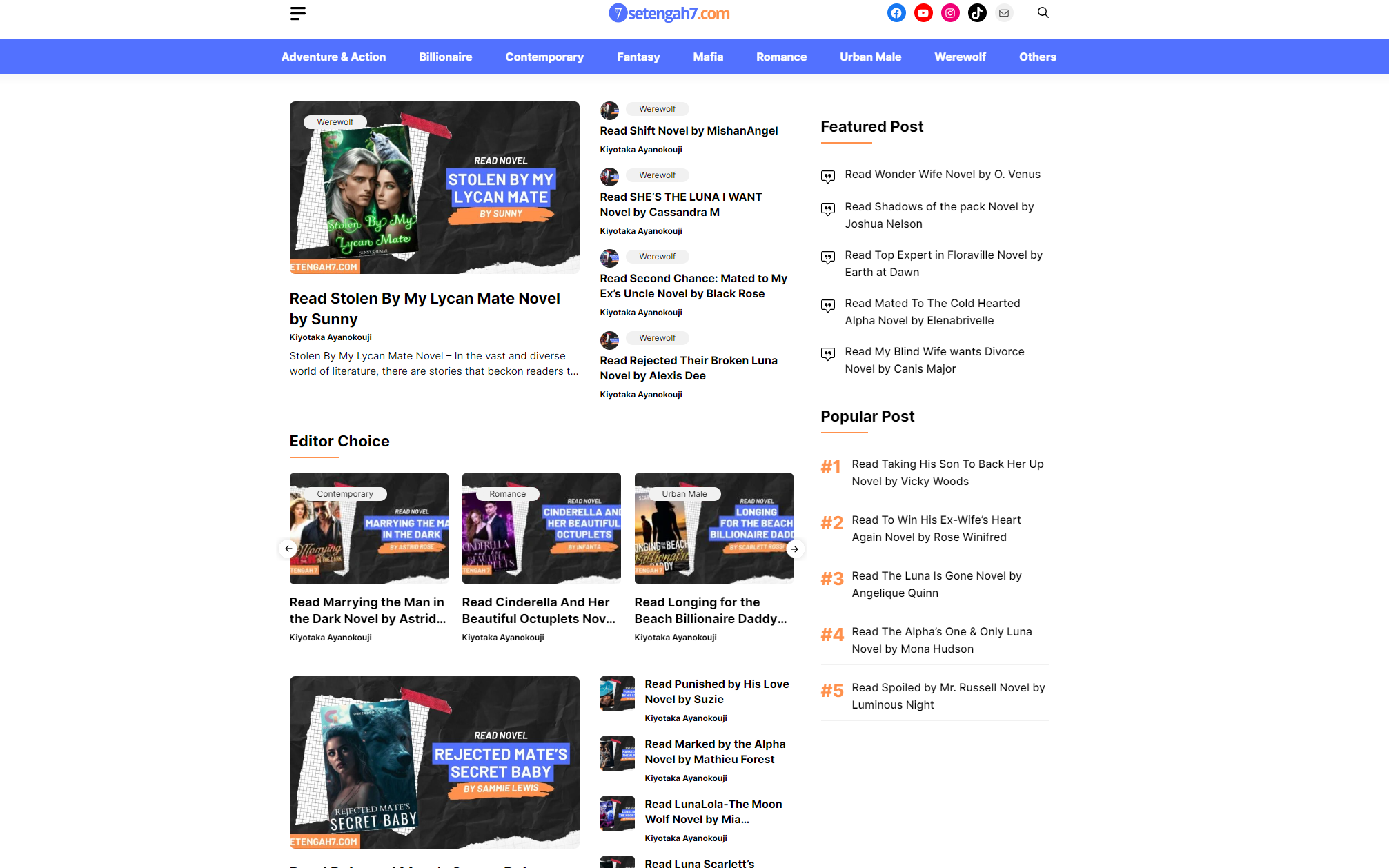Potensi Ekonomi Kreatif di Sektor Pariwisata
Indonesia has received recognition as one of the most beautiful countries in the world. From its fascinating culture to its breathtaking landscapes, the archipelago has something for everyone. With the booming tourism industry, Indonesia is expected to see an increase in the number of foreign visitors in the coming years. Hence, the potential to boost the economy with creative industries in the tourism sector is highly significant.
As part of the government’s effort to boost the country’s economy, the creative industry plays a significant role in the success of the tourism sector. Creative industries include advertising, architecture, art, crafts, design, fashion, film, music, performing arts, publishing, and software development. These industries contribute to the cultural and creative economy, often generating high levels of income and employment opportunities.
With the tourism industry being a significant contributor to the economy, creative industries such as art and crafts, design, fashion, and music can thrive as popular tourist attractions. For instance, traditional Batik and Songket textile in Yogyakarta, Bali, or West Sumatra is a novelty for most foreign visitors. Tourists are inclined to purchase and bring back these textiles as a souvenir from their visit to Indonesia. This highlights the potential of creative industries in the tourism sector, which will lead to a higher number of employment opportunities.
In addition to that, the growth of the digital economy has changed the way the creative industry operates and has opened up more opportunities. By promoting the creative industry through digital platforms, businesses can reach a wider audience beyond their local scope. With the use of social media and e-commerce, creative industries can reach and attract more tourists to the region. In terms of design, this includes creating social media campaigns, online marketplaces and providing curating content to engage with the audience. Creative industries are more accessible than ever, paving the way for a new era of creative entrepreneurship.
The development of the creative industry can also boost the tourism industry directly. The successful branding of a creative industry in a particular region can draw more tourists to the area. India, for instance, is globally known for its Bollywood industry, while South Korea is renowned for its K-Pop and fashion industry. Similarly, Bali, Lombok, Yogyakarta, West Sumatra, and other Indonesian regions can brand themselves as creative industry hotspots, making it a destination for creative industry enthusiasts.
Creative industries have largely been exempt from changes that are taking place across other industries. This is because creative industries are mainly based on human creativity, innovation, and craftsmanship, which cannot be replaced by a machine. These attributes give creative industries a unique advantage to produce exclusive and high-quality products to enrich the tourism experience for visitors.
In conclusion, the potential for creative industries to impact the tourism sector in Indonesia is tremendous. By promoting the creative industry, local artisans, designers and entrepreneurs can benefit the economy by creating more jobs, increasing revenue and developing a unique cultural identity. The future looks bright for creative entrepreneurs in Indonesia, and the tourism sector stands to benefit from it.
Kesenian Lokal Sebagai Aset Ekonomi Kreatif Pariwisata
Kesenian lokal dapat menjadi aset penting bagi ekonomi kreatif di bidang pariwisata. Indonesia sebagai negara yang kaya akan kebudayaan memiliki beragam kesenian lokal yang dapat menarik wisatawan untuk berkunjung ke daerah wisata yang memiliki kesenian tersebut.
Salah satu contoh kesenian lokal yang dapat menjadi aset ekonomi kreatif pariwisata adalah seni tari tradisional. Setiap daerah di Indonesia memiliki ragam tari tradisional yang sangat unik, seperti tari kecak dari Bali, tari tor-tor dari Sumatera Utara, tari topeng Cirebon dari Jawa Barat, dan masih banyak lagi. Wisatawan yang berkunjung ke daerah-daerah tersebut pasti tertarik untuk menonton dan bahkan ikut serta dalam pertunjukan tari tersebut.
Selain seni tari, kesenian lain yang dapat menjadi aset ekonomi kreatif pariwisata adalah seni musik tradisional. Setiap daerah di Indonesia memiliki jenis musik tradisional yang berbeda, seperti gamelan dari Jawa, angklung dari Jawa Barat, dan kolintang dari Sulawesi Utara. Wisatawan dapat menikmati dan mempelajari seni musik tersebut melalui pertunjukan dan workshop yang disediakan oleh para seniman lokal.
Selain kesenian, kerajinan tangan lokal juga dapat menjadi aset ekonomi kreatif pariwisata. Misalnya, batik yang berasal dari Indonesia menjadi salah satu kerajinan tangan yang populer dan diminati oleh wisatawan. Setiap daerah di Indonesia memiliki corak batik yang berbeda-beda. Oleh karena itu, batik dapat menjadi suvenir yang menarik bagi wisatawan yang berkunjung ke daerah yang memiliki kerajinan tangan ini.
Tidak hanya itu, kuliner lokal juga dapat menjadi aset ekonomi kreatif pariwisata. Setiap daerah di Indonesia memiliki makanan khas yang berbeda, seperti rendang dari Sumatera Barat, sate lilit dari Bali, dan ayam taliwang dari Lombok. Wisatawan dapat menikmati kuliner lokal ini dan bahkan mempelajari cara membuatnya melalui cooking class yang diselenggarakan oleh para chef lokal.
Dengan menggunakan kesenian lokal dan kebudayaan sebagai aset ekonomi kreatif pariwisata, dapat meningkatkan potensi pariwisata dan juga membantu masyarakat lokal untuk meningkatkan pendapatan mereka. Para seniman dan pedagang yang terlibat dalam ekonomi kreatif dapat bersinergi untuk mengembangkan dan mempromosikan kesenian lokal dan kebudayaan sebagai daya tarik wisata.
Peran pemerintah juga sangat penting dalam mendukung pengembangan ekonomi kreatif pariwisata melalui kesenian lokal dan kebudayaan. Pemerintah dapat memberikan dukungan melalui penyediaan infrastruktur, pelatihan, dan program bantuan untuk pengembangan ekonomi kreatif di daerah wisata.
Di Indonesia, kesenian lokal menjadi aset ekonomi kreatif pariwisata yang sangat penting. Keberagaman kesenian dan budaya di Indonesia dapat menjadi daya tarik bagi wisatawan yang berkunjung ke Indonesia. Para wisatawan dapat mempelajari budaya dan kesenian Indonesia serta membawa pulang kenangan yang unik dari setiap daerah di Indonesia.
Kolaborasi Industri Pariwisata dan Kreatif dalam Meningkatkan Kualitas Wisata
Indonesia is known for its beautiful and diverse tourism destinations that not only offer natural attractions but also cultural experiences. However, to improve the quality of tourism, the collaboration between the creative industry and the tourism industry is increasingly crucial. The creative industry possesses a unique ability to leverage the visitor experience and elevate the local economy through the growth of cultural products.
The collaboration between the tourism and creative industry can create diverse and unique products, which in turn may attract more tourists. For example, the collaboration between the fashion industry and the tourism industry can lead to the promotion of local textiles and handwoven fabrics, which can then be used in fashion and attire for both locals and tourists. This kind of product diversification can attract more tourists to the area, while also improving the quality of the local textile industry.
Another example is the collaboration between the tourism and the culinary industry. In many tourist areas, food is one of the key attractions. Therefore, the utilization of creative methods in promoting local culinary products could be beneficial. The tourism industry can collaborate with the culinary industry and provide cooking classes to tourists, which could enable them to experience local cuisine. Furthermore, the promotion of local culinary products online can attract more tourists to the destination.
Moreover, the collaboration between the tourism industry and the creative industry can be extended to the creation of unique souvenirs. In some cases, visitors bring back souvenirs that are linked to the area they visited. Therefore, creating unique souvenirs can help the local tourism industry to flourish. By collaborating with the creative industries, local entrepreneurs can produce high-quality products and souvenirs that will guarantee a memorable tourism experience. For instance, Batik products could be developed as the unique souvenir of Java, or woven cloths as Bali’s unique souvenir.
The collaboration between the tourism and creative industry could have another positive impact on the local economy as well. By working together, they can promote local small businesses and entrepreneurs. Local products and services can be utilized and combined with unique tourism experiences to attract more visitors, which in turn results in a boost in the local economy. Visitors can also be encouraged to purchase local products and souvenirs, which will then support small businesses, and thus also support the local economy.
Lastly, the collaboration between the tourism and creative industry could lead to sustainable tourism. Sustainable tourism practices are increasingly crucial as they aid in maintaining the environment, culture, and economy of tourism destinations. By collaborating, both industries can promote sustainable tourism. The creative industry can incorporate environmentally friendly practices in the production of souvenirs and clothing items, while the tourism industry can promote eco-tourism activities such as ecotourism, sustainable scenic tours, utilizing local public transport, and reducing plastic usage. Examples such as Mandai park in Singapore, where there are tourist activities in the garden, combined with the conservation and an animal care centre, could also serve as an inspiration for Indonesia.
In conclusion, the collaboration between the tourism and creative industry could be instrumental in improving the quality of tourism. Products developed through collaboration are unique and diverse and could attract more tourists, which in turn may improve the local economy. The collaboration may also have a positive impact on the environment, culture, and economy, leading to sustainable tourism practices. By working together, the industries can create an unforgettable visitor experience that benefits both the local area and the tourists.
Wisata Tematik untuk Menunjang Ekonomi Kreatif Lokal
Wisata tematik akan menjadi salah satu faktor penunjang ekonomi kreatif lokal di Indonesia. Wisata tematik berbeda dengan wisata biasa, dimana wisata tematik menawarkan pengalaman dan suasana yang berbeda untuk pengunjung. Pengunjung tidak hanya menikmati keindahan alam, tapi juga menikmati budaya lokal, kuliner khas, hingga seni dan kreativitas yang unik.
Wisata tematik menjadi kian diminati di Indonesia. Selain menambah pengalaman baru bagi pengunjung, wisata tematik juga berdampak positif bagi daerah wisata sebagai sumber pendapatan dan suatu wadah bagi kreativitas lokal.
Contohnya, Bali Yowana Cultural Park yang merupakan wisata tematik di Bali. Di Bali Yowana Cultural Park, pengunjung dapat menikmati tari tradisional Bali, seni lukis, kerajinan tangan, dan kuliner khas Bali. Tentunya, keunikan wisata tematik membuat wisatawan tertarik dan merasa jauh lebih puas.
Tidak hanya itu, keberadaan wisata tematik juga membawa dampak positif bagi perekonomian lokal. Wisata tematik dapat menjadi ajang promosi bagi produk lokal. Misalnya, ketika Anda berkunjung di Bumi Sangkuriang di Bandung, Anda bisa membeli aneka produk lokal, seperti kain khas Bandung,T-shirt unik dan asli, serta kaos – kaos lucu yang tidak akan bisa Anda temukan di tempat lain. Tidak lupa, terdapat juga kuliner khas Bandung yang sangat populer, seperti batagor, siomay, dan mie kocok.
Menariknya, keberadaan wisata tematik juga membuka lapang kerja baru di daerah wisata. Sebagian besar pengunjung wisata tematik biasanya membutuhkan pemandu atau penjaga wisata serta staff lainnya. Di Bali Yowana Cultural Park, terdapat banyak sekali lapangan pekerjaan bagi masyarakat Bali.
Wisata tematik yang berkaitan dengan industri kreatif juga memberikan peluang tersendiri bagi perkembangan ekonomi kreatif lokal. Sebagai contohnya, di kota Bandung, terdapat Dago Dreampark, wisata tematik yang memiliki museum gerabah, bioskop 4D, dan kafe. Beberapa besar pengunjung Dago Dreampark, biasanya ingin mencari dan membawa pulang oleh-oleh unik dan asli, seperti gelas atau cangkir yang diukir dengan ceruk indah, atau hiasan dinding yang terbuat dari akrilik bertekstur unik. Tak jarang, wisatawan yang berkunjung tersebut membeli produk dari seniman lokal yang mengiklankan dan menjual karyanya langsung di dalam museum.
Sementara itu, selain memberikan dampak positif bagi perekonomian, wisata tematik juga memberikan dampak positif bagi kebudayaan lokal. Lewat wisata tematik, masyarakat daerah bisa secara langsung mengenalkan kebudayaan daerahnya dan memberikan edukasi terkait budaya yang mereka miliki. Hal ini akan membantu melestarikan kebudayaan daerah dan mendorong masyarakat untuk melestarikannya. Contoh wisata tematik yang mendukung pelestarian budaya lokal antara lain Kampung Batik Trusmi di Cirebon dan Kampung Pandai Sikek di Padang.
Kesimpulannya, wisata tematik menjadi salah satu cara untuk meningkatkan ekonomi kreatif lokal. Dengan menawarkan pengalaman yang unik dan berbeda, wisata tematik mampu menarik minat wisatawan dan membuka lapangan kerja yang baru. Selain itu, keberadaan wisata tematik juga turut mendukung pelestarian budaya lokal dan memberikan ajang bagi para pekerja kreatif.
Peluang Ekonomi Kreatif di Digital Marketing Pariwisata
Indonesia has an abundance of natural beauty that makes it a perfect destination for tourists. From Bali’s iconic beaches to Yogyakarta’s historic temples and unique local culture, every region in Indonesia has something unique to offer. The industry has seen growth over recent years, and it’s no secret that tourism contributes significantly to Indonesia’s economy. One way to amplify this growth is through digital marketing. The digital economy has been a game-changer in every industry, and tourism is no exception.
Digital marketing can help push Indonesia’s tourism industry and creative economy forward by bringing more visitors to the country, increasing sales, and tax revenue from tourism. Over the years, many businesses have started investing in digital marketing efforts, and the results have been impressive. For instance, the Ministry of Tourism and Creative Economy recently launched the “Indonesia Care” campaign, which uses a combination of websites, social media platforms, and live events to promote Indonesia’s tourism sector.
The digital wave provides opportunities for creative entrepreneurs to capitalize on in the tourism industry. A creative economy includes businesses that embrace innovation, uniqueness, and an entrepreneurial spirit. Investors, entrepreneurs, and individuals in Indonesia’s tourism industry can leverage various creative economy opportunities, including:
1. Social Media Campaigns
Social media provides a platform for businesses to create and share content to reach potential customers both domestically and internationally. Social media marketing is relatively affordable and can reach a broader target audience. Social media offers opportunities to showcase authentic Indonesian culture and experiences, showcasing Indonesia’s people and their way of life. Businesses can get influencers on social media sites like Instagram and Facebook to help promote their tourism products and services and reach a wider audience.
2. Virtual Reality
Virtual reality gives potential visitors the opportunity to experience their chosen holiday destination before they book. In this new normal where travel has somewhat ground to a halt, VR provides an alternative to experience Indonesian cultures. It helps people bond with a location and feel more connected to it, creating a buzz about Indonesia’s tourism sector along the way. VR tour experiences need less funding compared to physical tour experiences, making it a great creative economy opportunity for entrepreneurs to invest and reap rewards.
3. Mobile Applications
A smartphone is the go-to device for planning travel nowadays. Travel apps can help tourists plan their trip to Indonesia, from finding activities at their destination to booking accommodations and flights. Mobile applications bring the convenience of online booking to your customer’s pockets, which means businesses can offer their services to customers in a way that is suited to the digital age that we’re in today.
4. Online Tour Guides
Live streaming services like Instagram and Youtube have become popular with travel enthusiasts. Tour guides can share their experiences and create a virtual space for people who are curious about Indonesia’s tourism sector. Tour guides can take visitors on a live tour of their location and share their knowledge. Online tour guides offer easy digital access to virtual tours and a way to showcase the experiences awaiting potential visitors.
5. Hashtivism
Campaigns on social issues have become mainstream with online Hashtivist campaigns. Hashtivism blends social activism with the use of digital hashtags to launch campaigns that promote togetherness and empathy. The campaigns can bring a sense of connection and compassion among people across all socio-economic backgrounds. The long-lasting essence of using a creative and compelling Hashtivist campaign in the tourism industry helps showcase Indonesia’s diversity, inclusivity, and rich cultural heritage. Hashtivism campaigns can bring local communities and their rich cultures to the forefront, inspiring visitors to experience Indonesia’s tourism sector in a new way.
Ultimately, creative economy initiatives can help ensure Indonesia’s tourism sector strengthens in the years to come. The potentials are endless, and by leveraging these opportunities, businesses can make a positive impact on their industry and communities.


